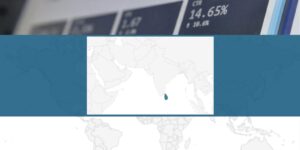For a number of years Bank Negara Malaysia has tried diligently to increase insurance penetration, which has remained at around 55% (ratio of total life insurance and family takaful policies to the total population of Malaysia). This has included both providing incentives such as offering new Takaful licences in the past as well as pushing insurers and Takaful operators to get involved in microinsurance.
According to the Protection Gap Study of Actuarial Partners in 2014, the following are the key under-protected segments of society:
- Younger working population, less than 30 years old has an average protection gap of 17 times its annual income. This age group has a tendency to spend its disposable income on lifestyle and entertainment items. In Malaysia this is also the largest proportion of the working population in Malaysia.
- The lowest income group, i.e. income of RM1,000 per month or below, with an average protection gap of 17.5 times its annual income. This income group represents 35 – 40% of the working population in Malaysia.
- Single people rather than the married population as the protection gap is 17 times its annual income as opposed to a gap of 5 for married people.
These segments can be generalized as two main underinsured components of society: the lowest income group and the younger working population. For the lowest income group there simply is no way to afford the level of coverage needed to fill in the protection gap, so government and NGO assistance would be required. This could be from Zakat funds or also from private initiatives such as PruBSN’s Prihatin (their charitable arm) which provides PruBSN Microtakaful Jariyah to the deserving hardcore poor and poor registered under the e-Kasih database (Malaysian national database of the poor and needy) from funds such as PruBSN’s zakat payments.
For the younger working population, although affordability is still an issue, a larger issue is allocation of disposable income. This is where any insurance targeting this segment will need to be more than simply pushing insurance solutions but rather targeting the lifestyle of the younger population, clearly adding value to close the protection gap. Neosurance is a company founded in 2016 which is involved in this kind of market, specializing in short term policies which are used on the go when the policyholder is engaging in sports or other activities where there may be a need and a gap with current insurance. Neosurance uses AI and its virtual insurance agent to target these needs as they arise and has as their tagline:
Just 7 seconds to get insured. Zero paperwork, instant everything. Close to people, closing the protection gap.
Their target is not so much on the bottom of the income pyramid but rather on linking insurance to specific needs and making the purchase of insurance part of the entire risk management and experience of the activity. One of the earliest countries to target this kind of market is Japan through Tokio Marine’s partnership with mobile operator DoCoMo.
Success in this market will be through targeting customers on the go, at the point they are planning or about to start events which entail risks which can be insured. Such products should be very simply to understand and straightforward to obtain coverage. Key will be developing an awareness of risk management and mitigation techniques. Short term this is connecting to the providers or source of such activities whilst medium term this will be building apps to properly understand risk management and tying these apps into the entire experience of the customer. Long term the key to success will be to teach risk management including insurance in secondary school, something which is well overdue!


